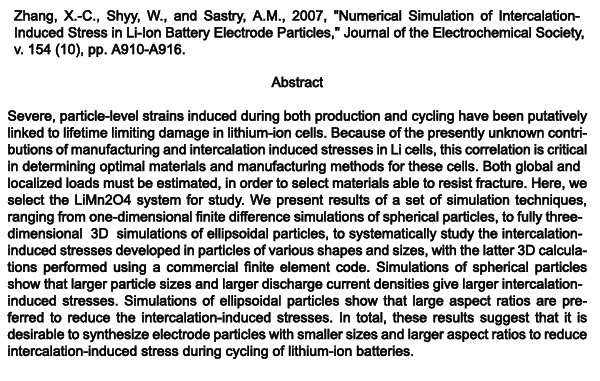Abstract
Severe, particle-level strains induced during both production and cycling have been putatively linked to lifetime limiting damage in lithium-ion cells. Because of the presently unknown contributions of manufacturing and intercalation induced stresses in Li cells, this correlation is critical in determining optimal materials and manufacturing methods for these cells. Both global and
localized loads must be estimated, in order to select materials able to resist fracture. Here, we select the LiMn2O4 system for study. We present results of a set of simulation techniques, ranging from one-dimensional finite difference simulations of spherical particles, to fully three-dimensional 3D simulations of ellipsoidal particles, to systematically study the intercalation-induced stresses developed in particles of various shapes and sizes, with the latter 3D calculations performed using a commercial finite element code. Simulations of spherical particles show that larger particle sizes and larger discharge current densities give larger intercalation-induced stresses. Simulations of ellipsoidal particles show that large aspect ratios are preferred to reduce the intercalation-induced stresses. In total, these results suggest that it is desirable to synthesize electrode particles with smaller sizes and larger aspect ratios to reduce intercalation-induced stress during cycling of lithium-ion batteries.
